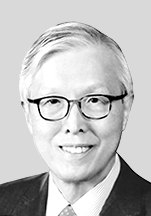Building co-prosperity in the Indo-Pacific
Published: 15 Jul. 2024, 20:02

Shin Kak-soo
The author is a former vice minister of foreign affairs and former ambassador to Japan.
The Korean government announced its Indo-Pacific strategy in December 2022. It is centered on building a multi-layered network of cooperation against challenges to freedom, peace and prosperity. One year and a half has passed since then. The announcement of the strategy is significant as it outlined a comprehensive diplomatic and security initiative based on the regional order we uphold in the Indo-Pacific region, where the country’s economic and security interests are at stake.
Korea’s Indo-Pacific strategy covers not only the North Pacific region, but also Southeast Asia, Southwest Asia, Oceania, Indian Ocean Rim African countries, Europe and Latin America. While the North Pacific — where major countries such as the United States, China and Japan are located — is important, we must pay attention to Southeast Asia and Southwest Asia for the Indo-Pacific strategy. And yet, research shows that Southeast Asian countries’ perceptions of Korea are still very low, and we must pay attention to this.
According to a poll released in early April by the ISEAS–Yusof Ishak Institute in Singapore, Korea scored only 1.0 for economic influence and 1.4 for political and strategic influence among the eight Asean member countries. The scores are nearly at the bottom. When asked about what country to choose as a third-party strategic partner amid the tense U.S.-China competition, Korea was ranked behind India, Australia and the United Kingdom, showing the level of our reputation. Beating the United States and China, Japan topped in three indicators: trust, a country you want to live or work in and a country you want to visit.
This is no coincidence. Japan placed a priority on Southeast Asia in its diplomatic relations after wrapping up its postwar reparations, Okinawa reversion and diplomatic establishments with China in the early 1970s. Since then, Japan has provided significant development assistance to Southeast Asian countries and built strong relationships through people-to-people exchanges. From 1960 to 2011, the Japanese government allocated 34.9 percent of its total official development assistance to Southeast Asia.
Japan has also focused on human resource development. For example, in Malaysia, which adopted the Look East policy, 26,000 people participated in programs run by the Japan International Cooperation Agency, and 60 percent of senior government officials higher than vice minister-level participated in those programs. Japan provides state-funded scholarships to about 3,000 international students from Southeast Asia every year. It has also supported about 40,000 youth exchanges since 2007 through the Japan-East Asia Network of Exchange for Students and Youths (Jenesys).
As of 2023, there were 182,000 international students enrolled in universities and higher education institutions in Korea. Of them, 162,000, or 89 percent, are from Asia, but only 29.1 percent of them are from Southeast Asia and 2.6 percent from Southwest Asia. While students from China, Vietnam, Uzbekistan and Mongolia account for 81.4 percent of the total, those from Southeast and Southwest Asia, excluding Vietnam, make up approximately 10 percent.
First, we must put effort into gradually increasing the number of international students to 300,000 per year and offer state scholarships to a certain percentage of students from Southeast and Southwest Asian countries. It is also necessary to expand youth exchanges by operating a Campus Asia Program for Southeast Asia and invitation programs for Southeast Asian youth leaders.
Cultivating pro-Korea human resources also has positive implications for our society, which is experiencing a sharp decline in our economically productive population due to the demographic cliff. Given that restoring the birthrate is not easy and will take a long time, it is time to make an effort to help foreign laborers, especially those from Southeast and Southwest Asia, adopt to life in Korea. Cultivating human capital in those regions is also critical to help counter Korea’s population decline. Furthermore, strengthening human ties is also directly related to strengthening Korea’s diplomatic power. This is why human resource development should be the core pillar of Korea’s Indo-Pacific strategy.
The Indo-Pacific is a vital survival place for Korea — a country under the yoke of geopolitical turbulence and division. It is also a strategic venue where Korean diplomacy can live and breathe. We must patiently build strong relationships with the Southeast and Southwest Asian regions based on a long-term vision.
In order to accomplish the goals of Korea’s Indo-Pacific strategy, a long-term national strategy, a strong network of people is essential. We must nurture human resources as long-term partners and connectors in Southeast and Southwest Asia to jointly build peace and prosperity in the Indo-Pacific region.
Translation by the Korea JoongAng Daily staff.










with the Korea JoongAng Daily
To write comments, please log in to one of the accounts.
Standards Board Policy (0/250자)